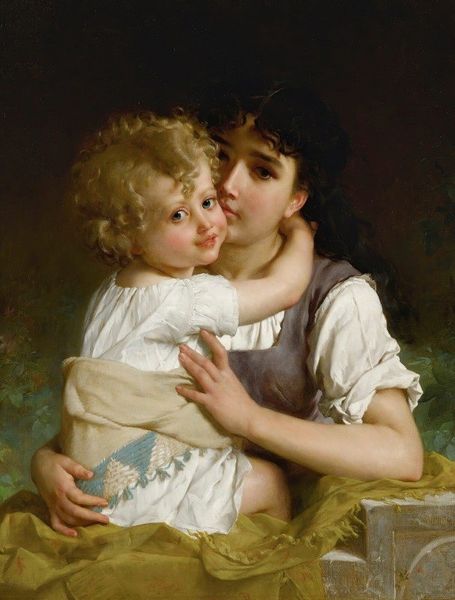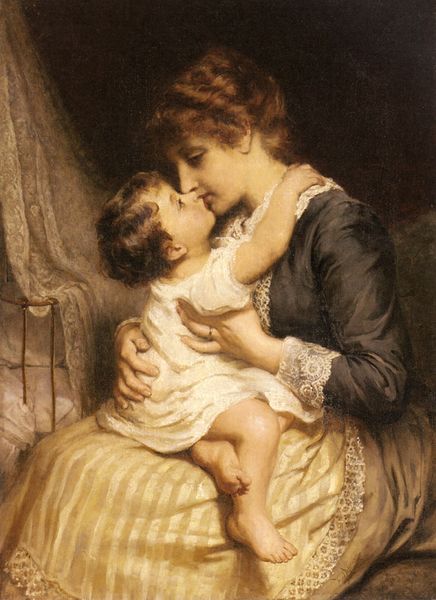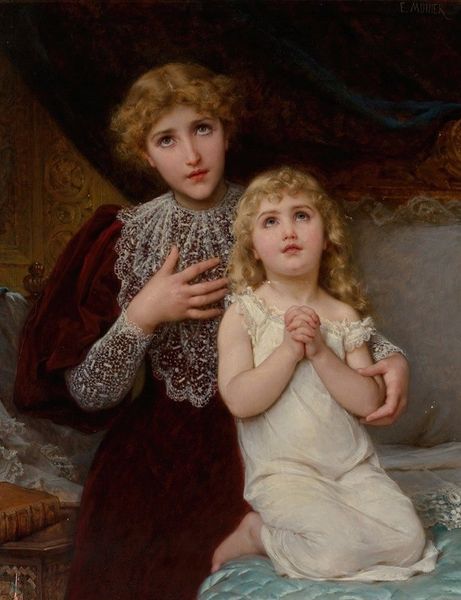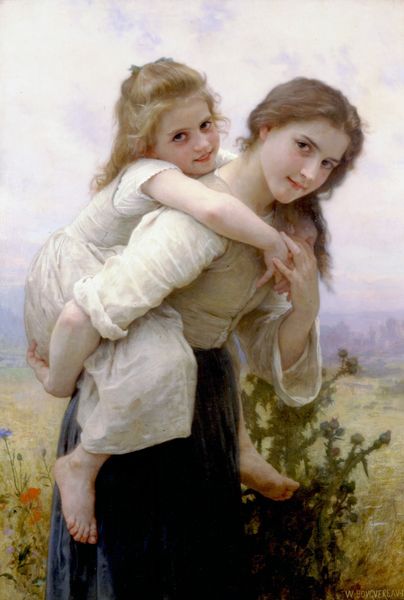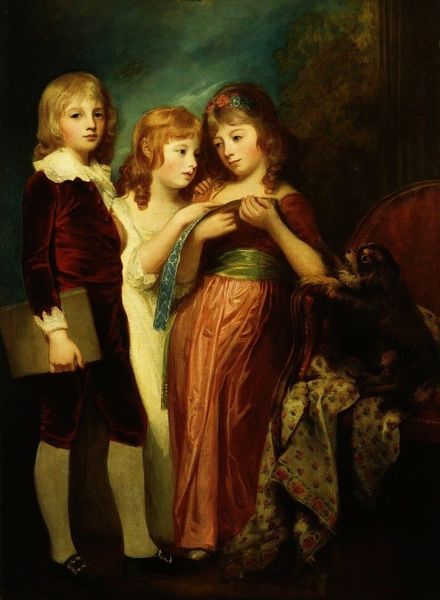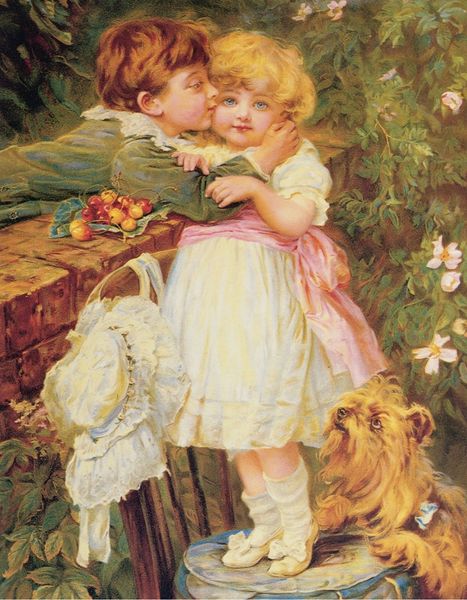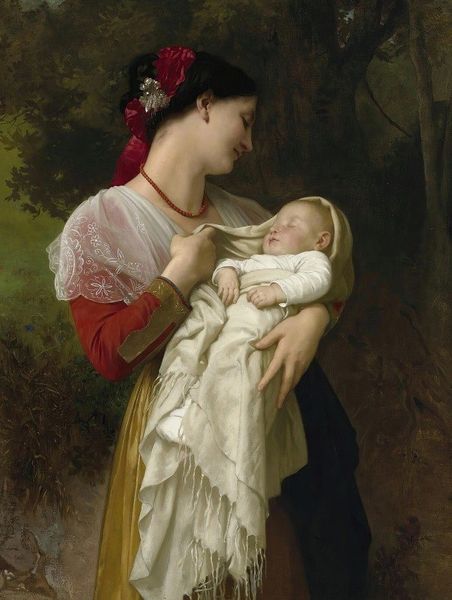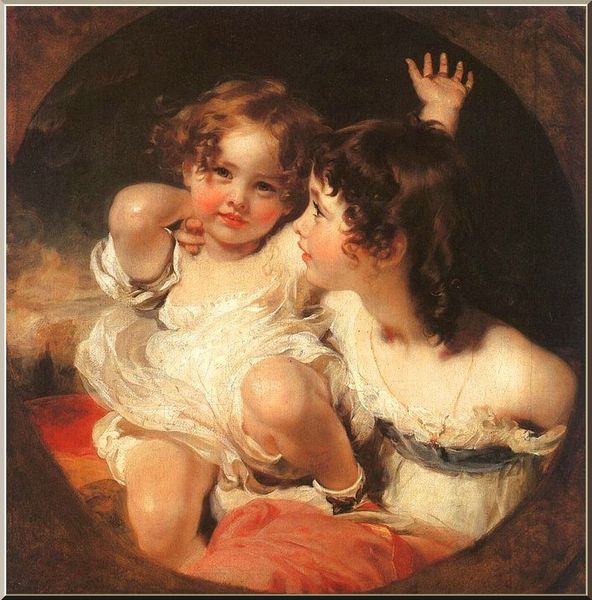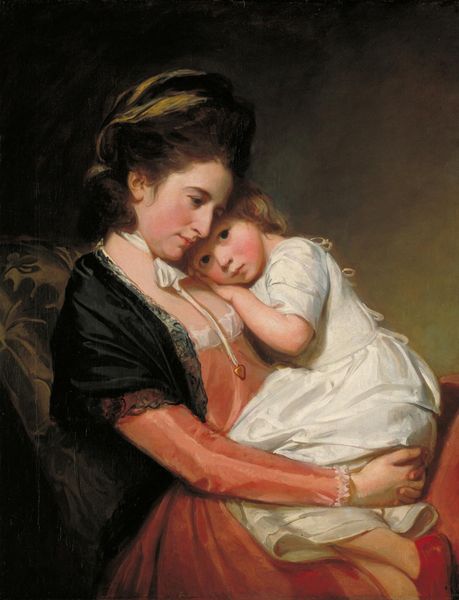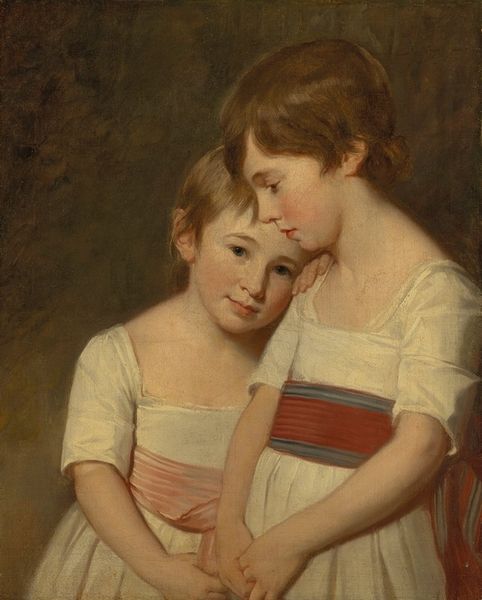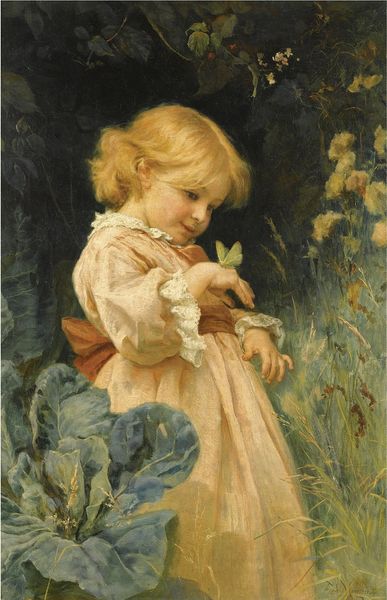
Copyright: Public domain
Editor: We are looking at "The Nest," an oil painting from 1887 by Sir John Everett Millais. What strikes me is the little girl’s gaze directed upward; it almost feels like she is aware of something looming above. What’s your read? Curator: That upward gaze certainly speaks to something, doesn’t it? Considering the painting’s title, I am curious about what “nest” symbolizes here. We might explore Victorian family structures, the roles of women as mothers and nurturers, or perhaps consider the limitations imposed on women within the domestic sphere at the time. What kind of safe place can she really guarantee? Editor: So, you are saying it might not just be about familial comfort, but about limitations? I hadn't considered that perspective. Curator: Exactly. Millais was part of the Pre-Raphaelite movement, often challenging conventional artistic and social norms, but with their own rules. We must always ask ourselves, who benefits and is heard, and who remains unheard? Consider the child's posture. Editor: It’s like the mother's embrace, even though protective, maybe it is still constricting. So, what message do you think Millais was trying to convey to viewers of the late 19th Century? Curator: He encourages us to engage in intersectional narratives that focus on identity, gender, race, and politics within the family dynamic itself, which may appear saccharine at first. Perhaps Millais pushes back on idealised representations of childhood and motherhood in that era, inviting reflection on social expectations and their implications for individual freedom, and highlighting how childhood itself is not entirely sheltered, nor gender-neutral. Editor: Wow, I definitely see the piece differently now. Thank you for showing me new interpretations. Curator: Likewise; seeing art through your eyes helps reframe the context and consider avenues not explored before.
Comments
No comments
Be the first to comment and join the conversation on the ultimate creative platform.
